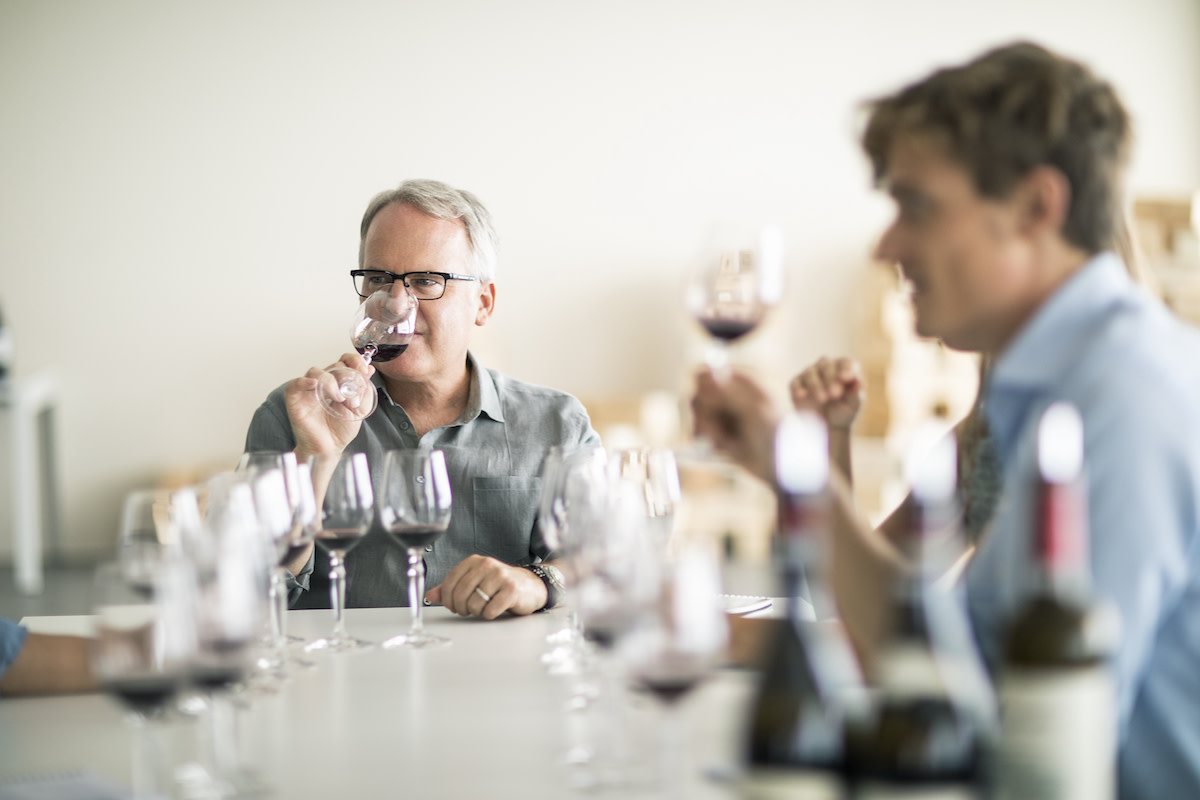James Suckling on Wine Points: 4 Tips for Tasting Wine
Written by MasterClass
Last updated: Jan 6, 2023 • 4 min read
The 100-point scale is a comprehensive wine rating system that considers aromas, tannins, and acidity. This scale helps tasters understand and appreciate blind tastes at wineries, retailers, and wine cellars. Learn James Suckling’s tips for rating wines.
Learn From the Best
A Brief Introduction to James Suckling
James Suckling is a legendary wine critic in the wine industry. He has tasted more than 200,000 wines in his forty-year career. As a journalist, he served as the former senior editor and European Bureau Chief of Wine Spectator, where he worked from 1981–2010. In 2010, James launched www.JamesSuckling.com, a wine website featuring comprehensive tasting reports, with wine ratings and tasting notes, of wines from around the world.
The website also contains video content, blog posts, and information about wine events. His site has grown to twenty-two employees across the globe. In 2021, the website rated more than 25,000 wines. The wine publication has hosted wine tastings in New York, Miami, Los Angeles, San Francisco, Hong Kong, Beijing, Seoul, and Bangkok. Wine enthusiasts, sommeliers, and workers in the wine trade read the site’s wine reviews.
What Is the 100-Point Wine Scale?
The 100-point system is a rating scale for wine quality. Wine scores go up to 100 points, with 100 points going to the best wines. Whether you’re trying a chardonnay, pinot noir, rosé, or tasting a varietal from a new wine region, this scoring system helps you better break down and comprehend the quality of a wine. “We use that when we're tasting wines, and I also used it at the Wine Spectator when I was there. One of my peers, Robert Parker [of The Wine Advocate], was a big proponent of the 100-point score,” James says. “I think it's an easy way to communicate about wine. It's an easy way for you to understand quality.”
How the 100-Point Wine Scale Works
Letter grades correspond to scores on the 100-point wine scale: A is excellent, and B is a good wine above average. “You probably remember in school that scores 90–100 meant A, 80–89 B, 70–79 C, and onwards down,” James says. The wine scoring system is simple: James gives “up to 15 points for color, 25 points for aroma, another 25 points for [the] structure of the wine (texture, acid, alcohol; in a red wine, it's tannin balance), and finally, 35 points for the overall quality of the wine.”
James approaches this process as a consumer first. “If it's under a B, I wouldn't even bother. Life's too short to drink bad wine,” James says. Great wine is “90–94, I want to drink that glass right away. 95–99, I want to drink the bottle on my own. My wife's out. My friend's out. It's amazing. 100, I fell in love with the bottle. I smelled the wine. I tasted it. It was emotional. It touched my soul, my heart. It was something that I'd remember for the rest of my life.”
James Suckling’s 4 Tips for Tasting Wines
When rating wines, consider the wine's color, aroma, structure, and quality. Follow James’s tips on how to taste wine:
- 1. Cleanse your palate between sips. When tasting many wines, you must cleanse your palate by using a spittoon and drinking water. “I regularly cleanse my palate with water. I like to use high-pH water, eight or above. . . . I find that alkaline solution of water cleanses my palate much better and reduces the acid in many wines,” James says. “I also might have some bread, or olives are great with red wine. You want things that refresh your palate.”
- 2. Get the wines to the right temperature to rate. Temperature is critical for wine tasting. “I think it’s important for whites to be between fourtneen and sixteen degrees centigrade—not too cold but cold enough to be fresh. If it’s too cold, I’m not going to be able to discern the aromas, taste, and texture,” James says. “The reds I also like a little bit cooler than normal. A lot of people serve their reds at twenty-two or room temperature. I like them around nineteen or twenty.”
- 3. Swirl your wine. Getting your wine to move around enlivens its scent. “When you’re tasting, it’s really important to swirl the wine to get some air in there to bring out the aromas,” James says. “Also, it’s important not to have too much wine in the glass. I like to have about thirty or fifty militers in the glass. Then you can really give it a good swirl.”
- 4. Taste in a clear space. Sometimes, you might taste wine in winemakers’ cellars or other dark areas. To concentrate on the wine’s color and qualities, taste the wine in a well-lit, not-too-noisy room. Light is essential when applying the scale to red, orange, or white wines. “It’s important that the environment's clean [and] well-lit,” James says. “I can concentrate on the wines. Sometimes that’s not possible if I’m in a cellar, traveling at dinner, or in a restaurant. But ideally, when I’m tasting, especially blind, it’s important to have a place where I can concentrate.”
Learn More
Want to learn more about the culinary arts? The MasterClass Annual Membership provides exclusive video lessons from the world’s best chefs and wine critics, including James Suckling, Lynnette Marrero, Ryan Chetiyawardana, Gabriela Cámara, Gordon Ramsay, Massimo Bottura, and more.
